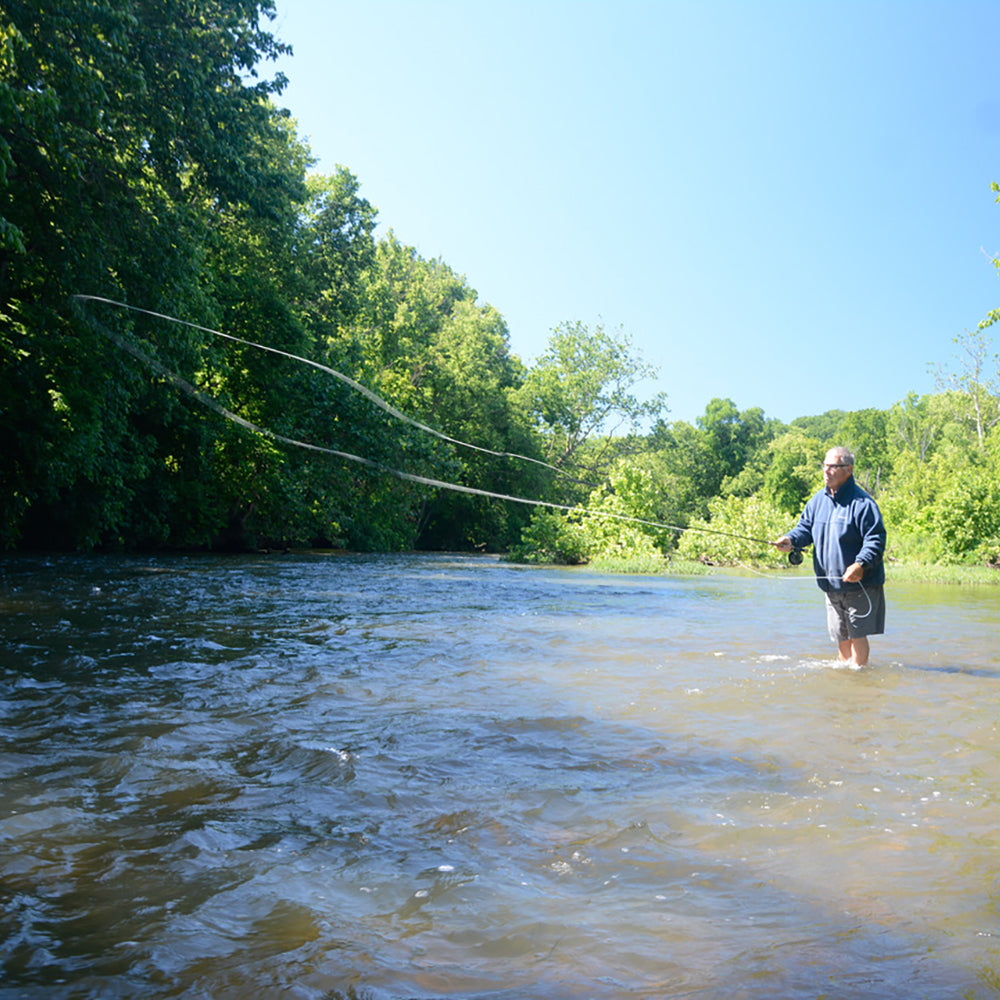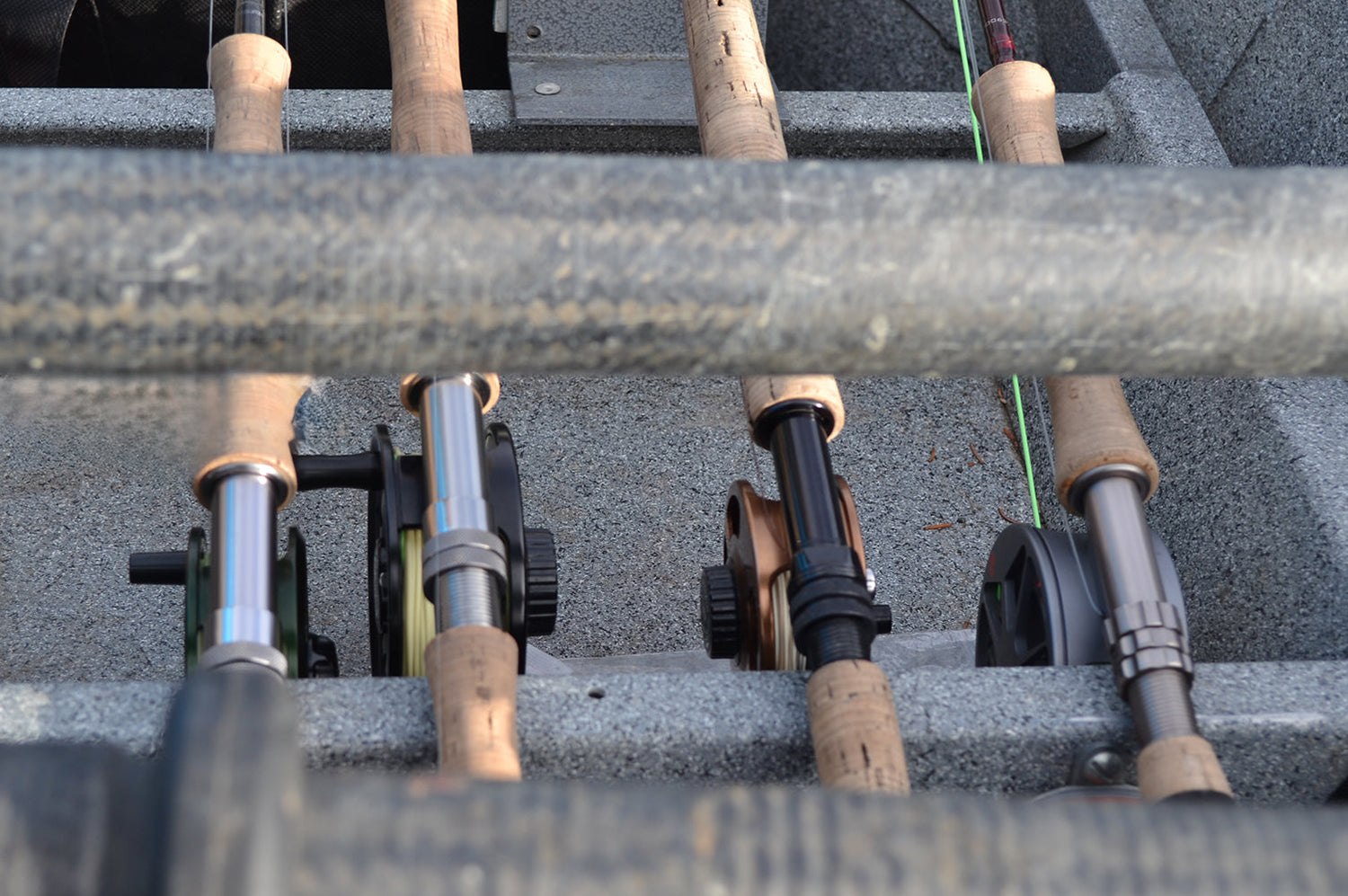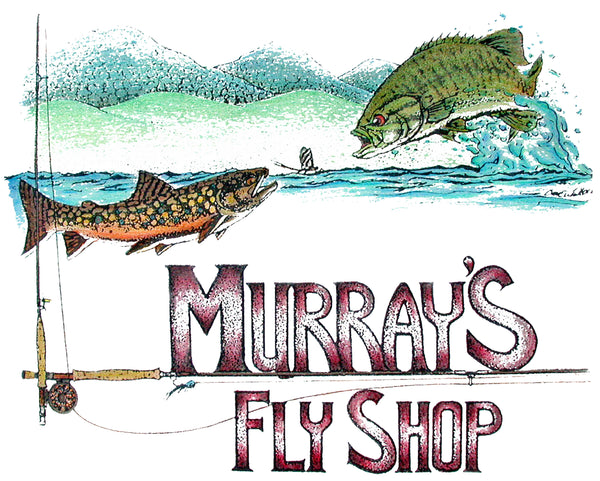Early March Mountain Trout Fishing
Early March Mountain Trout Fishing Story by Harry Murray

The trout fishing can be excellent with nymphs in the mountain streams in early March...even if we need to wear gloves and raincoats.
Early March is a wonderful time to fish mountain trout streams. The water levels are good and the streams are starting to warm up. This warming sparks the metabolism of the trout and their need to feed. The warming water also prompts the growth of the mayfly nymphs, stonefly nymph and caddis larva.
I use two different tactics to fish these mountain streams in March, my choice depending upon the depth of the water and the makeup of the pool.
 As the trout streams start warming up in early March the fish start to feed more actively.
As the trout streams start warming up in early March the fish start to feed more actively.
If the pool is less than three feet deep and there is a uniform current flowing from the riffle in the head of the pool all the way to the lip in the lower end of the pool I use an upstream dead drifting nymph tactic. Standing below the lip of the pool I cast straight upstream or up and across stream at a 20 degree angle. I make a series of four casts half way up the pool from one side to the other. The trout I catch here I release gently so they do not race up through the pool and scare the other trout.---Next I make a series of four cast all the way up to the head of the pool spacing these all across the pool and fish these back downstream.
This tactic is very effective. The term dead drift implies that the artificial nymph is permitted to drift down through the pool just like a natural nymph---just as if we are not attached to it. The greatest challenge confronting us is being able to detect the strike when the trout takes the nymph because this strike must be seen in our leader system. Attempting to rely on feeling this strike will result in missing the trout because they instantly feel it as a phony and eject it.
In order to help us see this strike I worked with the Scientific Anglers Company long ago and we developed an indicator now known as the Murray's Fly Shop Indicators. By incorporating two of these along the length of my Compound Knotted Hand Tied 9ft Classic Leader it became easy to see the trouts' strikes no matter what depth the nymphs were drifting. These Indicators are so slim that they do not interfere with the smooth casting of this Murray's Trout Nymphing Leader.

The growth of the mayfly nymphs is an important factor which prompts the trout to begin feeding in early March.
When fishing nymphs upstream dead drift I make a special effort on the presentation cast to remove all of the slack line with my line hand. This assures that I have a tight line from the nymph back to my line hand the instant the nymph lands on the stream. As the nymph drifts back down the stream to me I strip in the slack line with my line hand, staying tight to the closest Indicator to the fly which I can see. The slightest hesitation of the drift of the indicator is my cue to set the hook. By fanning several casts upstream and ups and across stream in this manner it is often possible to catch several trout in each pool.
The second nymphing technique I use in early March is selected because many of the pools are too deep to use the upstream dead drifting method. I call this swing nymphing and it is easy to master because it depends on feeling the strikes of the trout. Many of the beginning anglers in my "on the stream" schools catch most of their large trout with this tactic.
There are two great advantages of swing nymphing. First the trouts' strikes are easy to detect because you can feel them and second you will be able to get your nymphs deeper with this method than any tactic you can use with a floating line.
To preform swing nymphing, position yourself toward the side of the pool directly opposite of the deep part of the pool which you suspect will hold your trout. Your first cast is made 15 feet long up and across stream at a 45 degree angle. The nymph is allowed to sink deeply on a slack line as you watch your Indicator to tell when you have good depth. Once your fly is close to the stream bottom take up the slack line with your line-hand until you are tight on the nymph. At this point swing your fly rod downstream at the same rate the nymph is drifting. By keeping a tight line on the nymph in this way you will be able to quickly feel the strike and hook the trout.

The wild brook trout are the earliest trout to feed in the mountain streams in March and their beauty is outstanding.
Successive casts are made a foot longer, still at a 45 degree angle upstream and fished back downstream in the same manner as used on the first drift. Usually 6 casts made in this manner with gradually lengthening cast will enable you to catch several nice trout in each pool.
Often a successful ploy is to work your way up the stream from pool to pool pausing below each one in order to determine if the dead drifting tactic or the swing nymphing tactic will be most effective in each specific pool. This approach serves two purposes: it helps you catch many trout and it gives you a good understanding of the streams which will enable you to enjoy your angling to the utmost in the future.
Effective flies for early March are the:
- Murray's Dark Stonefly Nymph size 12
- Murray's Yellow Stonefly Nymph size 14
- Mr. Rapidan Bead Head Nymph size 12
- Murray's Professor Nymph size 12
- Casual Dress Nymph size 12
- Murray's Caddis Larva size 14
- Murray's Tan Caddis Pupa size 14
- Mr. Rapidan Olive Soft Hackle Nymph size 12
- Murray's Olive Caddis Pupa size 14
These 9 nymphs, larva and pupa will catch many trout in mountain streams all across the country in early March. Using a Murray's Trout Nymphing Leader with its built in Indicators will definitely help you improve your catch.
-

Learn Fly Fishing at Murray’s Fly Shop: Classes, Workshops & Schools
Welcome to Murray’s Fly Shop – Your Fly Fishing Learning Hub At...
-

Featured Flies of the Month
Harry Murray's recommended fly list for this time of the year. (October...
-

Fly Fishing Rod Outfits
Fly Fishing Rod and Reel Outfits for Smallmouth Bass fly fishing, Trout...



